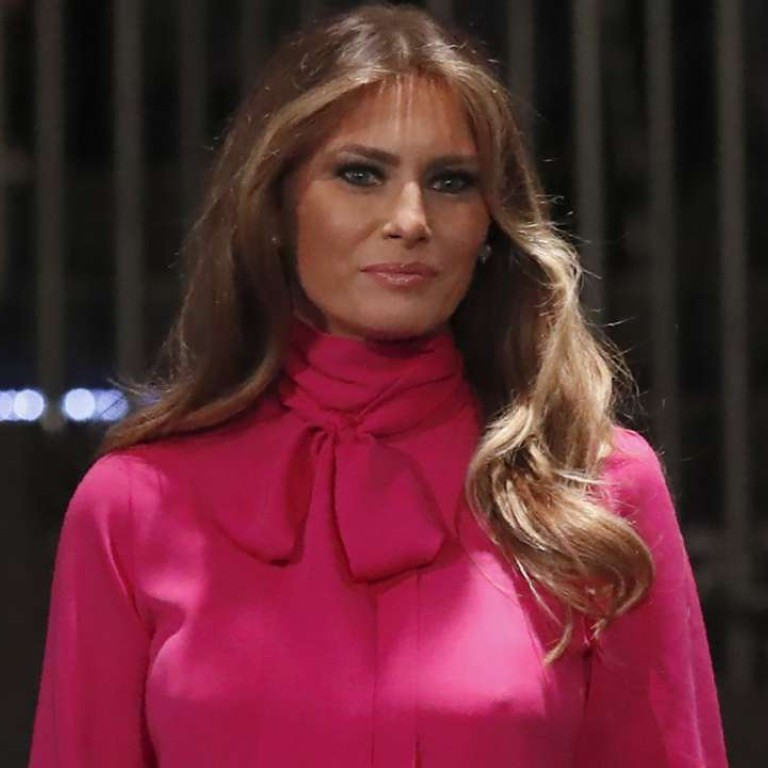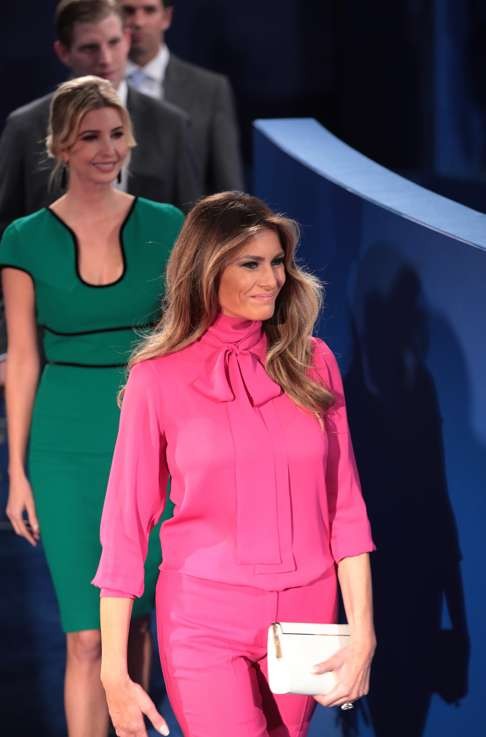
The top 10 fashion stories of 2016, from see-now-buy-now to the rise of streetwear and more changes of direction at leading houses
There were notable departures at Valentino, Roberto Cavalli and Saint Laurent among others, Forever 21 and Abercrombie & Fitch announced Hong Kong store closures, and there’s a new US first lady to dress
It’s been a turbulent year for politics and finance – even the fashion world wasn’t left unscathed. Here’s a look back at the industry’s top stories in 2016, from fashion’s constant musical chairs to the rise of streetwear and see now/buy now.

The biggest breakup was at Valentino, where co-creative directors Pierpaolo Piccioli and Maria Grazia Chiuri went their separate ways after working together for eight years at the house (and many years at various brands before that).
The world of menswear wasn’t immune, as Justin O’Shea came and left Brioni in the space of six months and Haider Ackermann joined Berluti. With so many holes to fill, there were replacements – Jonathan Saunders landed at DVF while Raf Simons was finally confirmed as creative director at Calvin Klein (he’ll show his debut collection in February next year). Interestingly, talents such as Alber Elbaz, Stefano Pilati, and Francisco Costa are still roaming free.

2. Girl power Women came out on top in the fashion world. Former Valentino co-creative director Chiuri made history as the first woman creative director at Dior. Ex-Balenciaga designer Bouchra Jarrar took the reins at French couture house Lanvin, where she had big shoes to fill. Both women sent out debut catwalk collections that celebrated strength and femininity. At Dior, models sauntered down the catwalk in T-shirts emblazoned with slogans such as “We Should All Be Feminists” and “Dio(r)evolution.” Jarrar featured draped dresses and tailoring covered with neck ties and floral brooches. It’s official – girl power is back!

3. Keeping up with Kimye Kim Kardashian and Kanye West continued to dominate the fashion headlines (and we’re not talking about their outfit choices). West’s year started off well when he unveiled his autumn/winter Yeezy collection at the same time as his latest album Life of Pablo. His spring/summer debut didn’t go as well – he sent industry insiders on a trek outside of Manhattan, while models ended up fainting due to heat and dehydration. A few weeks later during Paris Fashion Week, Kim Kardashian was held at gunpoint in her private apartment/hotel and robbed of US$11 million worth of jewels.
Kardashian has been absent from social media ever since but we have daughter North West to keep us entertained with her wardrobe of black, fur, sequins and velvet.

4. The Vetements effect
If 2015 was the year of Alessandro Michele at Gucci, then this year’s award goes to fashion outsider (now insider) Demna Gvasalia.
When he burst into the public eye, slapping DHL and Champion logos on T-shirts and sweatshirts (and pricing them at astronomical levels), twisting and torquing proportions and otherwise challenging the definition of “good taste”, Demna Gvasalia, co-founder of the Vetements design collective, was called subversive and a fashion revolutionary.
Before you could say “Martin Margiela-inspired,” Gvasalia was named creative director of Balenciaga, where he made his debut last March. Then the Fédération Française de la Couture, French fashion’s governing body, announced that Vetements would be on the couture schedule, the most exclusive week in fashion. By November, Gvasalia was onstage at the Royal Albert Hall in London clutching two Fashion Awards: one for “international urban luxury brand”, the other for “international ready-to-wear designer”.
It seems everyone has jumped on the streetwear bandwagon, although our bets are on brands Off-White and Hood By Air.

5. H ong Kong phooey

6. The style vote
Pantsuit Nation, Pussygate – if there was ever a year that fashion and politics were shamelessly intertwined it was 2016. As America prepared to bid farewell to fashion lover and Alaia fan Michelle Obama (the UK also lost a style icon in Samantha Cameron this year), fashion hopes were pinned on Democratic Party candidate Hillary Clinton and her colourful pantsuits. On the other side of the boxing ring was Melania Trump, who made headlines with sartorial choices such as a Gucci pussy bow blouse, Ralph Lauren jumpsuit and Victoria Beckham sheath (we have yet to see her in Ivanka Trump’s fashion line).

7. The persistent trends
We know that fashion is all about cycles, as trends come and go. However, designers in 2016 were complacent: watching their “new collections” coming down the catwalk felt like Groundhog Day – again, and again and again. We are well aware that fashion is moving too fast, but we cannot bear to see another rendition of the bomber jacket. Among other trends that need to putting to rest are anything 1980s, including sparkling minis and oversized jackets, fringing and cold shoulder tops.

8. Sad farewells
There were many losses for the fashion community, including those who inspired it such as singers Prince and David Bowie. In June the fashion world mourned the death of legendary New York Times photographer Bill Cunningham. Flame-haired Sonia Rykiel lost her battle with Parkinson’s in August. One of the most shocking was the untimely death of Australian designer Richard Nicoll, long regarded as one of London’s brightest young talents. RIP.
9. The see-now-buy-now conundrum
If we had a dollar for every time “see now buy now” appeared in the fashion pages this year, we’d be millionaires. A growing number of designers adopted this new model (which sees collections available for sale immediately after being shown on the catwalk) including Tom Ford, Ralph Lauren, Rebecca Minkoff and Tommy Hilfiger, who joined forces with model Gigi Hadid. As a result the fashion calendar and buying schedules went topsy turvy. Fashion editors weren’t happy either, and lamented that many of the collections were lacking creativity.
Some fashion houses, including Burberry and Gucci, showed men’s and women’s collections together.
The jury is still out on whether “see now buy now” will be commercially successful or viable.

10. Celebrating diversity

